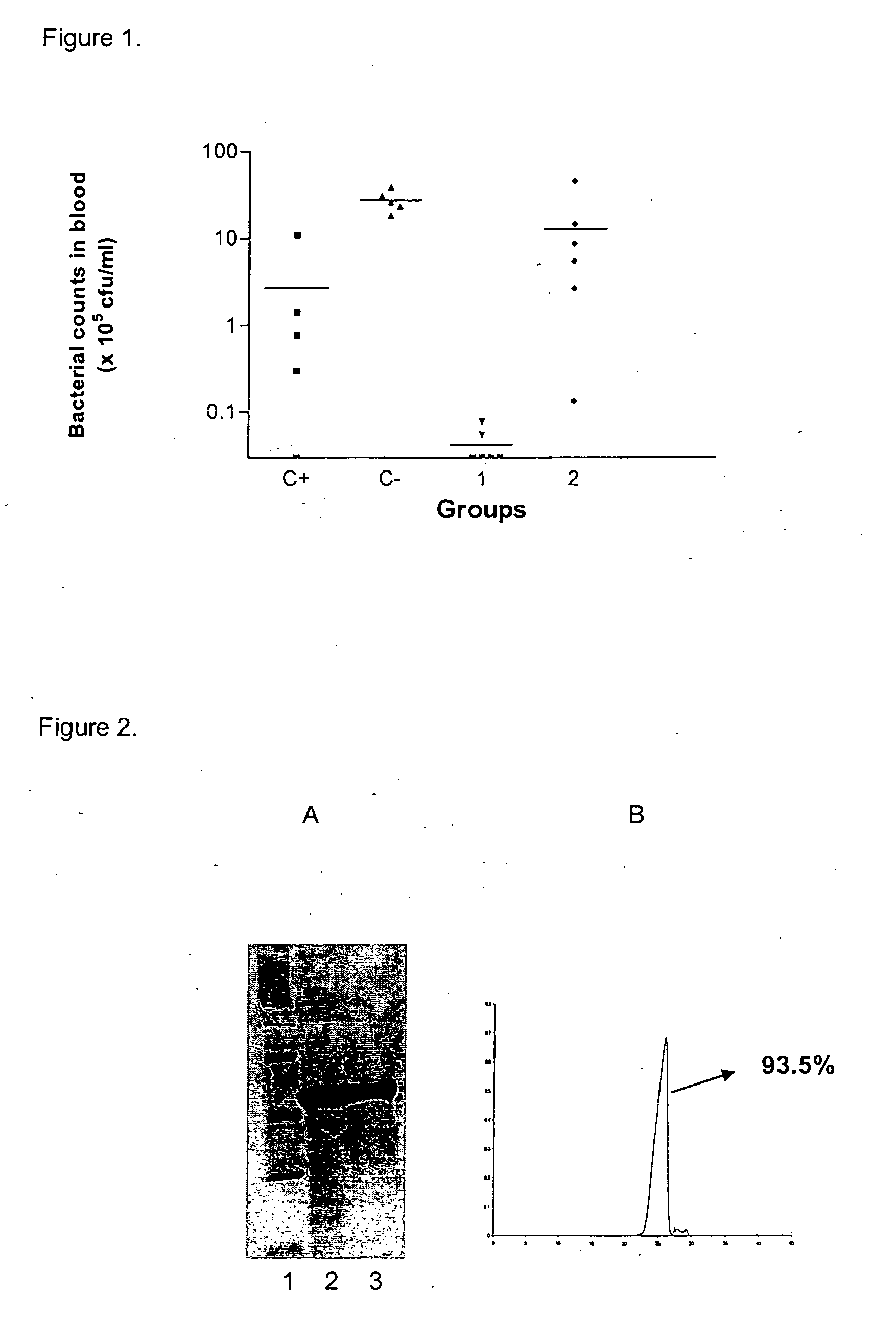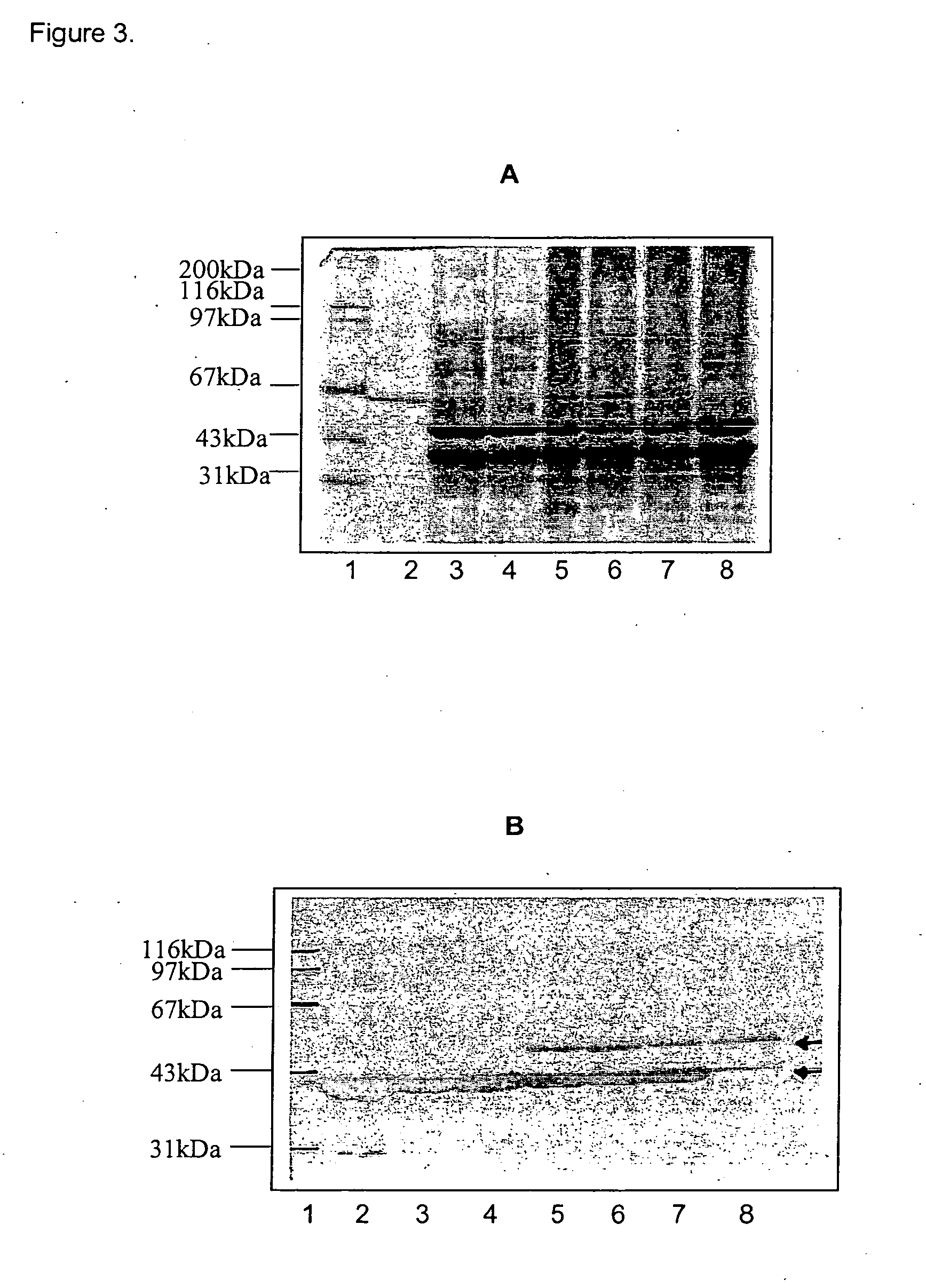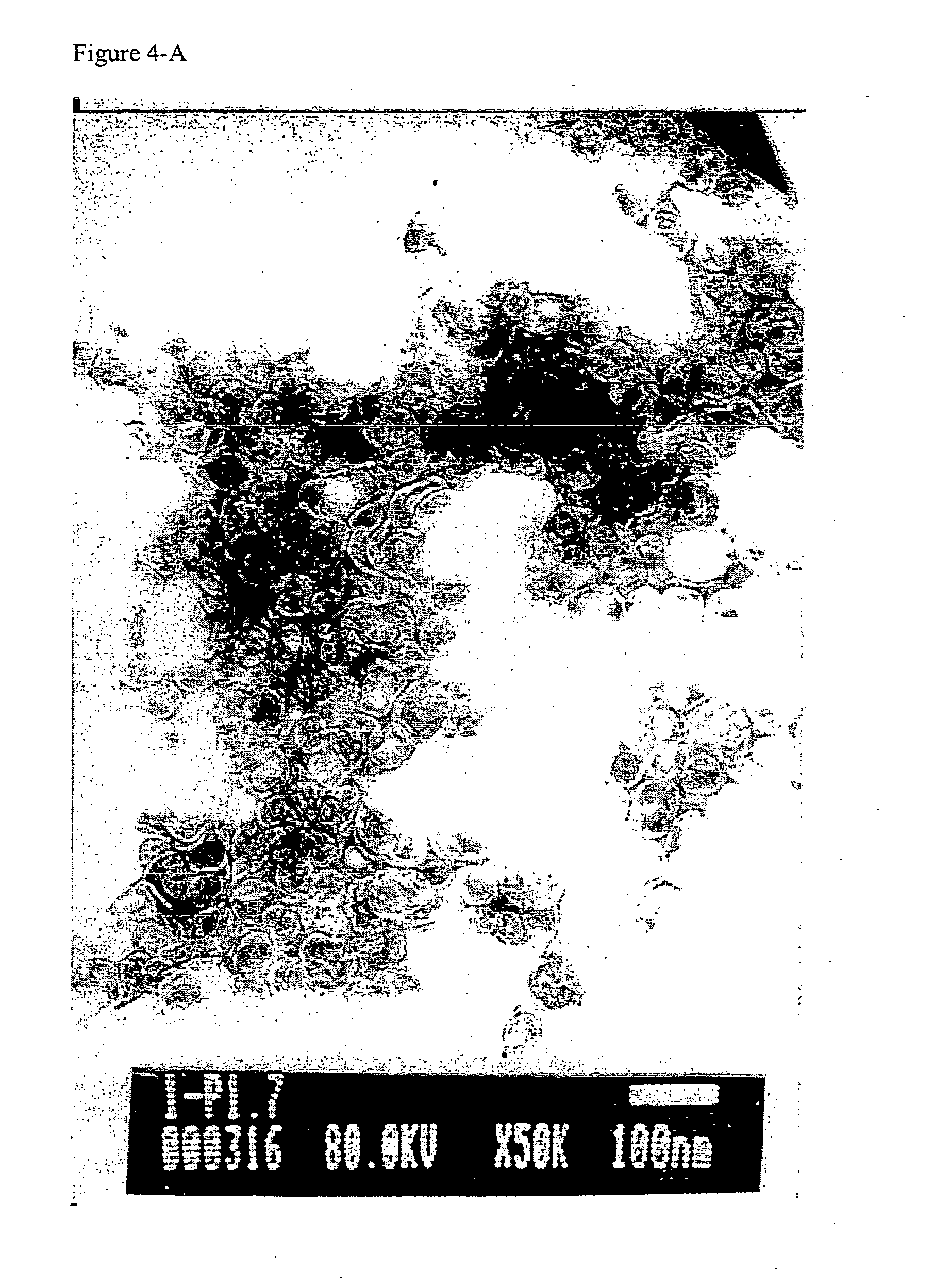Method of antigen incorporation into neisseria bacterial outer membrane vesicles and resulting vaccine formulations
a technology of outer membrane vesicles and antigens, applied in the field of medicine, can solve the problems that vaccines failed to induce bactericidal antibodies in young adults and children
- Summary
- Abstract
- Description
- Claims
- Application Information
AI Technical Summary
Benefits of technology
Problems solved by technology
Method used
Image
Examples
example 1
Influence of the Vesicle Structure in OMV from Neisseria meningitidis, when Administered by Intranasal Route, on its Immunogenicity and Protective Capacity
[0045] A comparative study between OMVs and NVOMPs (Non Vesicle forming outer membrane proteins) was carried out through the following experiment. Two groups of 10 mice each were immunized through the intranasal route (IN). Animals received 3 doses 7 days apart, with 50 ug of OMVs or NVOMPs, in a volume of 50 ul per animal. Detailed group composition of the immunogen is shown in Table 1.
TABLE 1Composition of the immunogen used for each group.GroupOMVsNVOMPs150 μg—2—50 μg
[0046] IgG levels against strain B385 OMVs after second and third doses were determined by ELISA. Results are presented in Table 2. Antibody titers were calculated as the reciprocal value of the maximal dilution that triplicates the O.D of the pre-immune sera. Statistical analysis was performed through a t-Student test.
TABLE 2ELISA and bactericidal titers afte...
example 2
Purification of Recombinant PorA and Insertion into N. meningitidis OMVs while Maintaining Intact the Vesicle Structure
Purification of Recombinant Protein PorA 7,16,9
[0049] By genetic engineering a clone expressing the recombinant PorA protein which contains the epitopes corresponding to subtypes 7, 16 and 9 in the same polypeptide, was obtained. The expressing clone was grown in LBA culture media at 37° C. for 8 hours in the presence of kanamicyn. After centrifugation, the cellular pellet was disrupted by sonication and the insoluble fraction was collected in order to be treated in the following way: [0050] Wash with Tris-EDTA, pH 8.0 buffer (TE), followed by a wash with TE+NaCl 0.1 M, MgCl 0.8M, 0.5% NP40. [0051] Solubilization with a buffered carbonate-bicarbonate at pH 10.0 solution containing Urea 8M to a final protein concentration of 10 mg / ml.
[0052] After solubilization several steps were followed for chromatographic purification of the protein. Consequently the solubiliz...
example 3
Evaluation of the Immune Response Against Recombinant PorA Protein Inserted into OMV from Neisseria meningitidis
[0057] Once the variant of incorporation for recombinant P1.7, 16, 9 was selected, the insertion of the recombinant proteins P1.9, P1.16 and P1.7, 16 in OMVs preparations was conducted. These preparations were used as controls in an immunization schedule in order to evaluate the immune response generated against the protein P1.7,16,9. These additional antigens were cloned and expressed in E. coli and were isolated from strains of N. meningitidis that express each of these subtypes given the variability that the PorA (also called P1) protein exhibits.
[0058] Recombinant proteins were refolded by dilution into Tris-HCl 1M, 2 mM de EDTA, 1.2% sodium deoxycholate, and 20% sucrose, and incubated with OMVs 1.5 hours at RT before centrifugation. From this point forward, this method was chosen to insert protein antigens into the outer membrane vesicles of gram negative bacteria. ...
PUM
| Property | Measurement | Unit |
|---|---|---|
| pH | aaaaa | aaaaa |
| concentration | aaaaa | aaaaa |
| pH | aaaaa | aaaaa |
Abstract
Description
Claims
Application Information
 Login to View More
Login to View More - R&D
- Intellectual Property
- Life Sciences
- Materials
- Tech Scout
- Unparalleled Data Quality
- Higher Quality Content
- 60% Fewer Hallucinations
Browse by: Latest US Patents, China's latest patents, Technical Efficacy Thesaurus, Application Domain, Technology Topic, Popular Technical Reports.
© 2025 PatSnap. All rights reserved.Legal|Privacy policy|Modern Slavery Act Transparency Statement|Sitemap|About US| Contact US: help@patsnap.com



